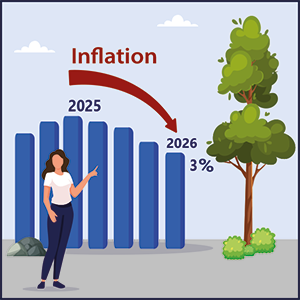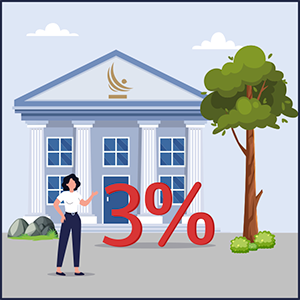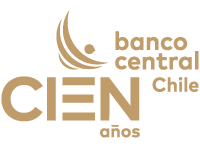Monetary Policy Report September 2025
Eventos
Monetary Policy Report September 2025

Headline inflation has evolved in line with forecasts and has continued to fall, along with inflation expectations which remain aligned with the 3% target for the next two years. However, the core inflation (which excludes volatile items) has exceeded expectations, influenced by stronger domestic spending and high cost pressures. Compared to the projections in the June Monetary Policy Report (IPoM), both consumption and investment have performed better in recent months, while the impact of the temporary factors that boosted activity early this year has dissipated, as was indicated at the time. Externally, the market outlook for the Federal Reserve’s (Fed) monetary policy has become more expansionary, which has favored the evolution of short-term financial conditions. In any case, the risks of an abrupt deterioration in these conditions persist. In the central scenario, projections for domestic demand growth are increasing, especially for this year. Upward adjustments are also being made to GDP, although by a lower magnitude. Regarding inflation, the core component is estimated to reach higher levels than those projected in June between the end of this year and the first part of the next year. Headline inflation is expected to converge to 3% during the third quarter of 2026. The Board will evaluate the next movements of the Monetary Policy Rate (MPR) being attentive to the evolution of the macroeconomic scenario and its implications for inflation convergence. In the current conditions, the risk of greater inflation persistence calls for gathering more information before continuing the process of leading the MPR to converge to its neutral range.
What does this MP Report tell us?

Economic activity has performed in line with forecasts, although with higher consumption and investment.

Inflation has continued to decline. However, its most stable component (inflation excluding volatile prices) is above expectations.

Economic activity has performed in line with forecasts, although with higher consumption and investment.
- On the investment side, the increase has been driven mainly by large projects developed in the mining and energy sectors.
- Consumption also grew more than anticipated, due to wages that have continued to rise and a better financial situation for households.
- In this context, consumption and investment projections for the period 2025-2027 are increasing.
- Meanwhile, economic growth (GDP, Imacec) has been in line with expectations. The temporary factors that boosted the economy earlier this year —cherry exports and the impact of tourism— have dissipated, as estimated.
- Economic growth projections for this year have been adjusted slightly upwards from a range of 2 to 2.75% to a range of 2.25 to 2.75%.

Inflation has continued to decline. However, its most stable component (inflation excluding volatile prices) is above expectations.
- The Consumer Price Index (CPI), an indicator that measures changes in the prices of goods and services, fell from 4.4% annually in May to 4% in August.
- In recent months, the monthly CPI has been volatile, making it difficult to accurately interpret price movements.
- However, core inflation (which considers only the most stable prices) has exceeded previous projections.
- These core prices are expected to decline during 2026, bringing total inflation to the 3% target during the third quarter of next year.

This makes it necessary to closely monitor how this component of inflation evolves and the variables that explain it (demand and costs, among others).
- Although global uncertainty has decreased in recent months, it is still above the levels observed in the last decade.
- Beyond the agreements reached, tariffs imposed by the United States on other countries are at their highest since 1940.
- Other sources of uncertainty on the world stage are linked to wars and military tensions.
- In this scenario, the possibility of a deterioration in global financial conditions remains a significant risk.

Overall, the Central Bank forecasts that inflation will converge to 3% during the third quarter of 2026 and remain at that level thereafter.
- Inflation is expected to converge to 3% in the third quarter of 2026. However, core inflation has been somewhat higher than expected and calls for close monitoring of its evolution.
- At its September meeting, the Central Bank kept the interest rate at 4.75%.
- The Board of the Central Bank of Chile reaffirms its commitment to conducting monetary policy with flexibility, so that projected inflation stands at 3%.
Presentations
- Presentación de Rosanna Costa, Presidenta, ante el Senado
- Presentación de Rosanna Costa, Presidenta (Icare)
- Presentación de Claudio Soto, Consejero (Bradesco)
- Presentación de Luis Felipe Céspedes, Consejero (Sofofa)
- Presentación de Stephany Griffith-Jones, Vicepresidenta (PUC)
- Presentación de Luis Felipe Céspedes, Consejero (RAM)
